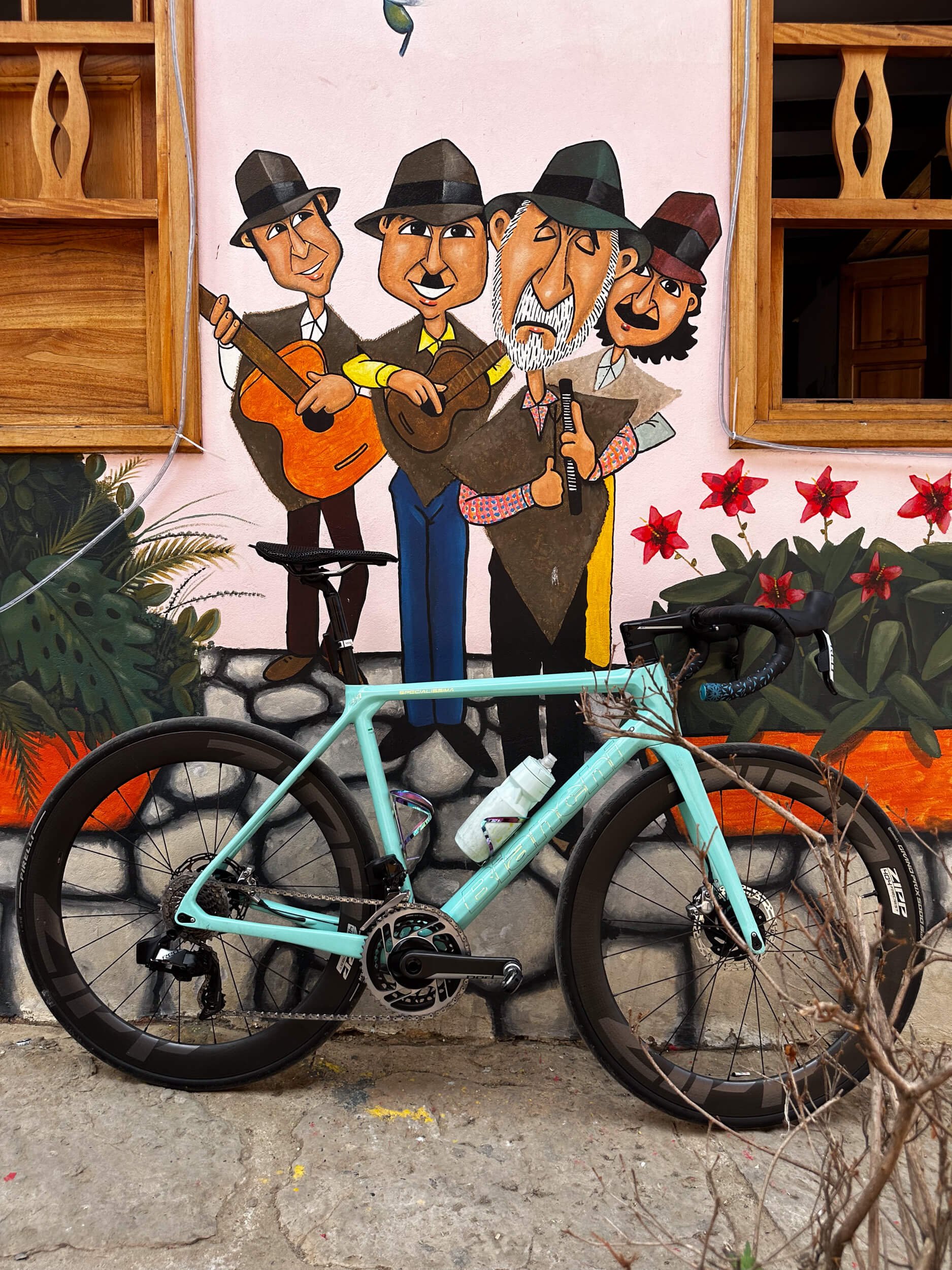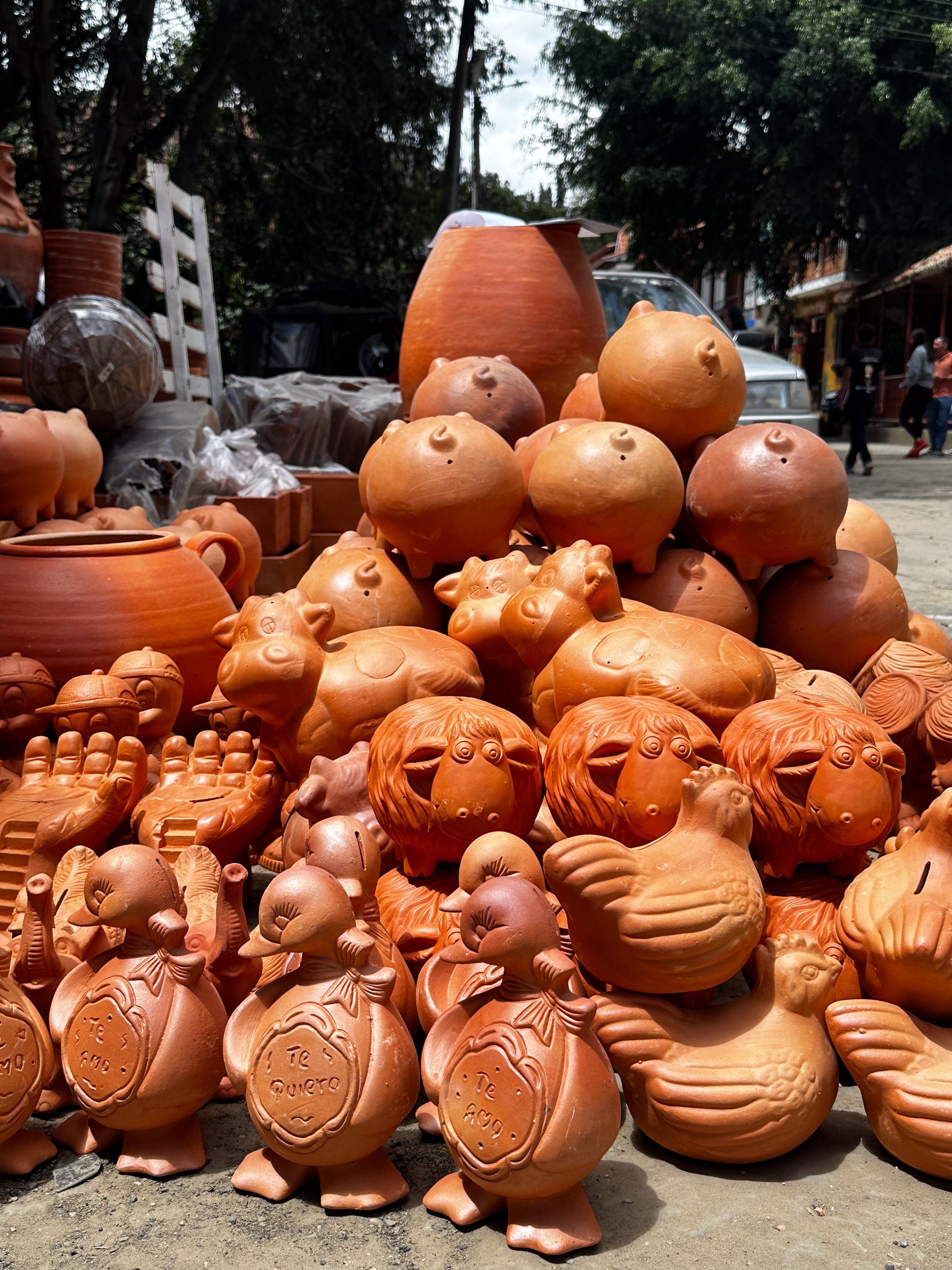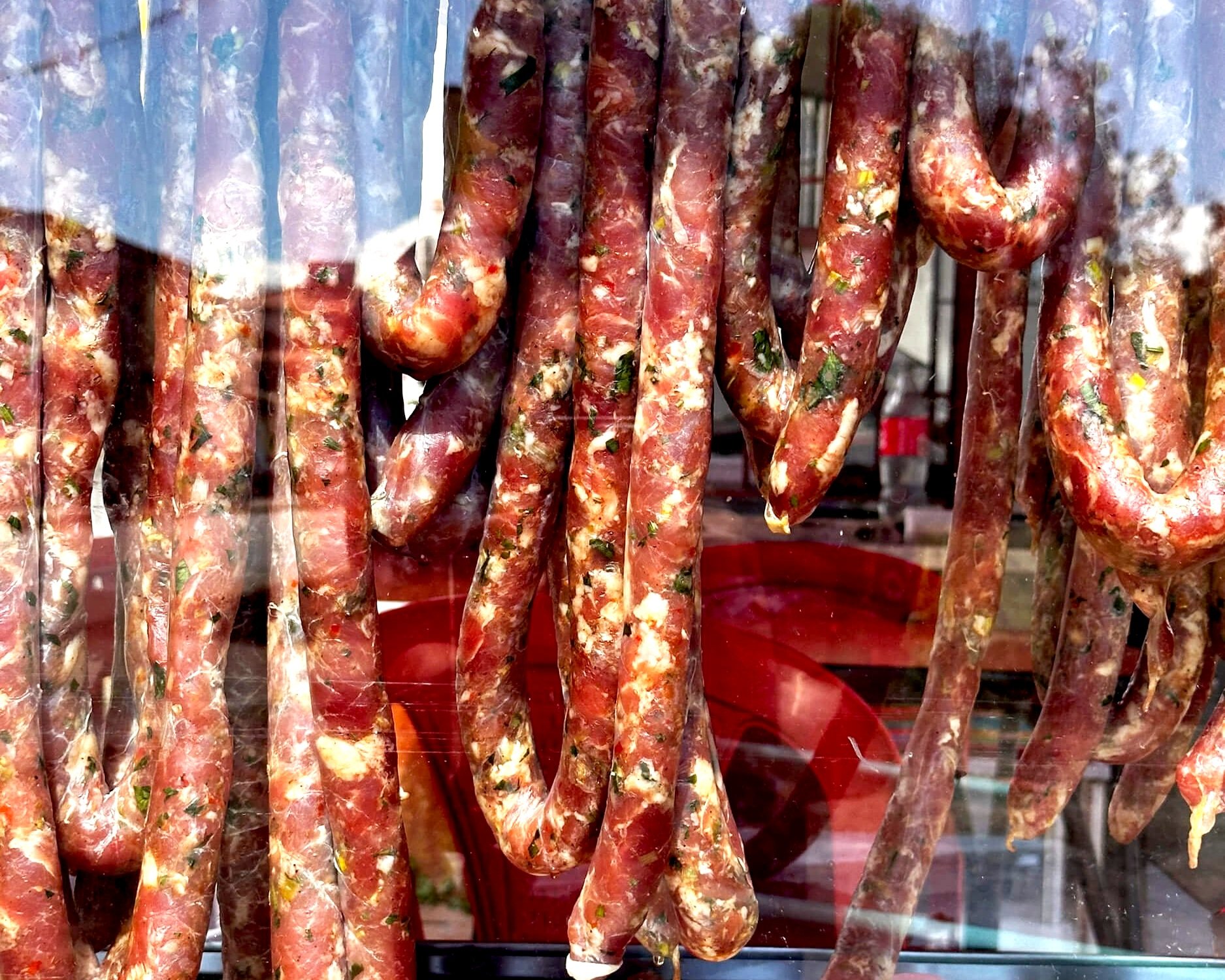Pedaling through the past: A Villa de Leyva weekend getaway.
Five cycling friends were eager for a weekend escape and burning with the desire to explore the open road. We set off on an exhilarating three-stage adventure to a place where time has stood still for centuries. Leaving behind the chaos of our daily routines, we embarked on a thrilling journey to a place untouched by the passage of time.
The picture-perfect main square of Villa de Leyva, Boyacá.
Our journey through Boyacá, the “Land of Freedom,” was more than just a cycling trip. It revealed a glimpse of a place where over four centuries of past and present coexist harmoniously. From the lively streets of Colombia’s capital to the peaceful cobblestones of Villa de Leyva, we were transported through time. Witnessing cycling stars in action and nearly crashing into a goat at high speed, our adventure promised excitement, discovery, and a deep connection to Colombia’s rich heritage.
Villa de Leyva, located in the heart of Boyacá, is a colonial masterpiece of South America. Founded in 1572, its cobblestone streets, whitewashed buildings, and expansive main square transport visitors into a time capsule. The region’s history dates back even further, with the surrounding area famous for its prehistoric fossils and dinosaur remains. Before the Spanish Conquest, the region was home to the Muisca, the ancestors of today’s Andean communities. Located about three and a half hours by car from Bogotá, this charming town lies on a high plateau of Altiplano Cundiboyacense, surrounded by the dramatic mountains of the Eastern Ranges of the Colombian Andes.
Breathtaking mountain scenery in Boyacá.
Stage 1: Bogotá to Villa de Leyva
It was a crisp, clear, and chilly morning, typical of Bogotá’s weather. After battling through peak-hour traffic to the starting point, our journey began in Cajicá on the capital’s outskirts. The excitement was palpable as we unpacked our bikes and loaded supplies onto the support vehicle. We were enthusiastic but apprehensive as the five of us clipped in and pedaled. The route from Cajicá to Villa de Leyva is 140 km (90 mi), with an elevation gain of 1,500 m (6,000 ft), challenging even the most seasoned riders. But from the first pedal, the nervousness turned to excitement, and the adrenaline kicked in. The congested traffic jam gradually led to the wide open road and panoramic mountains. The initial climb out of the city, Alto de Sisga, was demanding but manageable. Most of us tackle this Category 3 climb regularly. Yet, no one wanted to go full gas on the first climb, saving the legs for many more miles to come.
Our lunch stop was in the small town of Villapinzón for a “parilla Colombiana,” a traditional Colombian-style BBQ. We indulged in a massive, cholesterol-laden feast of sausages, roasted pork, and crispy chicharrón—delicious but not exactly the ideal fuel for cycling. The vibe among our group was infectious, and we shared laughs over the fluorescent-radioactive chorizos no one wanted to eat!
A traditional “parilla Colombiana” — more is more!
Back on the road, we were surprised to find that the Tour Colombia 2.1 was in full swing. The road was blocked, helicopters were flying overhead, and team buses were passing by as we anxiously waited for the peloton. We positioned ourselves in a prime spot at the top of the Alto de Ventaquemada. Half an hour later, the breakaway group flew past, followed by the main peloton. We watched in awe as these pros sprinted up a climb at warp speed. Seeing the stars up close was inspiring, even for a millisecond. The race’s excitement added fuel to the remainder of our journey.
After almost three hours of riding on the main highway, we reached Puente de Boyacá (the Boyacá Bridge), near the border of Boyacá and Cundinamarca. This key historical site celebrates the Battle of Boyacá of 1819, pivotal in securing Gran Colombia’s independence from Spain. Simón Bolívar, “El Libertador,” was the protagonist and central figure who united the armies and led the battle to victory. The bridge symbolizes Colombia’s liberation and the bravery of its fighters. This is why Boyacá is called the “Land of Freedom.”
As we exited the main highway and entered the back roads of Boyacá, the landscape transformed into a scene straight out of a painting. Vast rolling hills and lush farmlands stretched as far as the eye could see; so far, the cows looked like tiny specks in the sea of green. The beauty of the region was so captivating that it felt like we had stepped back in time to a peaceful land. Then, the green mountains eventually gave way to a desaturated deserted valley, as if a sepia filter had been applied to the entire scene. We began the 11 km descent of Alto de Sachica towards Villa de Leyva. This part of the journey reminded us of Gran Canaria, Lanzarote, or even a scene from The Planet of the Apes!
One of the most nerve-racking moments was when one of us almost crashed into a goat while descending at 70 km/h. It was a close call that added a dash of excitement and a reminder of the unpredictable nature of the adventure. We laughed about it later, but at the moment, it was a heart-stopping incident!
The thrilling descent just before the goat incident.
Arriving in Villa de Leyva was like stepping back in time. Riding through the cobblestone streets on the final stretch, we speculated on what it’s like to ride the teeth-grinding Paris-Roubaix. The main square, Plaza Mayor, is one of the largest in the Americas. It was a bustling hub of activity, with locals and tourists mingling and enjoying the golden hour. As we rolled into the scenic finish line, we were ecstatic with a sense of accomplishment. The five of us celebrated obnoxiously, congratulating each other while tourists looked on, some even laughing. Once the dopamine wore off and the fatigue kicked in, we settled into a cozy guesthouse for the evening. The peaceful ambiance was a rejuvenating change from the hustle and bustle of Bogotá, guaranteeing a restful night’s sleep.
Cobbles! Cobbles! Cobbles!
Stage 2: Villa de Leyva — Ráquira Loop
After a deep and sound sleep, the second day took us on a shorter but equally rewarding out-and-back loop to Ráquira. Featuring picturesque local roads, rolling hills, and endless panoramas, the loop covered approximately 60 km (37 mi). The route was designed to offer a mix of cultural immersion and scenic beauty, a perfect balance for our weekend getaway.
Raquirá is called the “Cradle of Colombian Handicrafts” and the pottery capital of Colombia. Riding through this historic gem felt like stepping into a living museum. This lively town is saturated with color and culture, with vividly painted houses and bustling local shops. Skilled artisans have been making traditional ceramics for centuries. The festive atmosphere embodies a timeless spirit, bridging the gap between the past and the present. We took our time to admire the craftsmanship. We spoke with proud artisans, absorbing ourselves in the history behind each piece.
On our return leg, we made a lunch stop at a local eatery in Sutamarchán, famous for its “Longanizas”—a type of chorizo. We sat at a humble roadside restaurant, and soon a giant platter of “picada” was served. It was a generous assortment of potatoes, sausages, morcilla (blood sausage), and five other meats. Carnivore-centric lunches are a tradition here. The sheer volume of meat left us satisfied yet struggling to tackle the next hills. It was a true taste of Boyacá’s culinary heritage.
Returning to Villa de Leyva, we watched the sun set over the main square. As the sky darkened, the place lit up with people and activity. Locals and tourists flocked in, and the energy was electric. We wandered through the cobblestone streets, soaking in its timeless beauty. It was an eclectic mix of old and new, with a colonial backdrop juxtaposing with flying drones, laser toys, and flashes of smartphones. The town felt like a living postcard, where the past and present coexist in perfect harmony.
The legendary Longaniza Boyacense.
The panoramic mountainous landscape of Boyacá.
Stage 3: Villa de Leyva to Bogotá
The final stage: the most challenging leg of the journey, covering over 140 km (86 mi) with 2,000 m (6,500 ft) of elevation gain. We started early with the aim of finishing before dark. The first part was Alto de Sáchica, a tough 10 km climb that didn’t allow our legs to warm up. Despite the difficulty, the stunning views of valleys and farmlands made it somewhat enjoyable. The air was filled with the scent of onion fields, reminding us of the area’s flourishing agriculture. We were greeted by friendly farmers who waved and cheered as we rode by; it was clear that cycling is a big deal in this region.
Frequent empanada stops along the way gave us the perfect fuel. The savory pastries, filled with meat and rice, were a delicious treat that kept us going. As we approached Ventaquemada, barely halfway, fatigue began to kick in. Both physically and mentally weary, the remaining miles seemed daunting. However, after many frequent stops, positive self-talk, and several “Pony Malta” later, we stuck together and rode the final stretch chain-gang style. Something we couldn’t have achieved if we had ridden individually. We made it to the finish line as the sun was setting. The timing couldn’t be more perfect.
Altiplano Cundiboyacense: this high plateau is as big as the state of New Jersey!
Empanadas: Colombian cyclists' main fuel source.
Reflection on the weekend getaway
As we packed our bikes and reflected on the weekend, we realized that this getaway had been more than just a cycling trip. It had been a journey of escapism and a chance to rejuvenate and reconnect with nature and culture. We were particularly impressed and surprised by the contrasts between Colombia’s Departments. The local cuisines, people, and scenery offered a unique glimpse into the country’s rich tapestry. The hearty picada in Villapinzón, the vibrant pottery of Ráquira, and the friendly farmers all contributed to a deeper appreciation of Colombia’s cultural and natural diversity.
This journey has shown us the transformative power of cycling. It has allowed us to explore and discover new places, challenge ourselves, and experience the beauty of this country in a deeply personal way.
The 5 amigos!
The future of cycling adventures is rooted in the past.
Our journey through Villa de Leyva taught us the importance of connecting with history. The cobblestone streets, colonial architecture, ancient fossils, and the 17th-century Plaza Mayor reminded us that understanding our origins enriches our experiences. This blend of old and new presented a unique viewpoint, illustrating how the past, present, and future are deeply intertwined. Often, we get caught up in our daily lives and forget to take a moment to appreciate a broader perspective. This trip allowed us to do just that! We realized how the past shapes the present and inspires our future.
The peaceful Plaza Mayor at 6am.
At Colombici, we’re on a mission to redefine holidays by elevating cycling to the forefront of tourism. Join our upcoming adventures and experience the beauty and diversity of Colombia from a cyclist’s perspective. Whether you’re chasing KOMs or admiring the scenery, Colombia offers something for everyone. So pack your bike, set out on an adventure, and let the past fuel your journey forward.





























